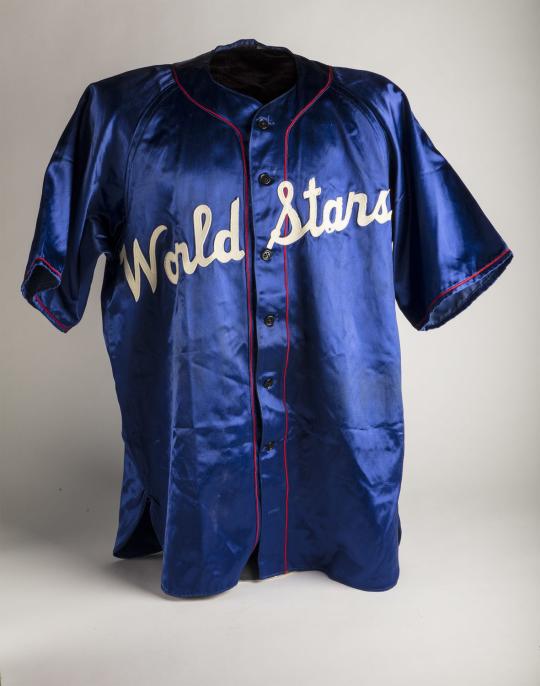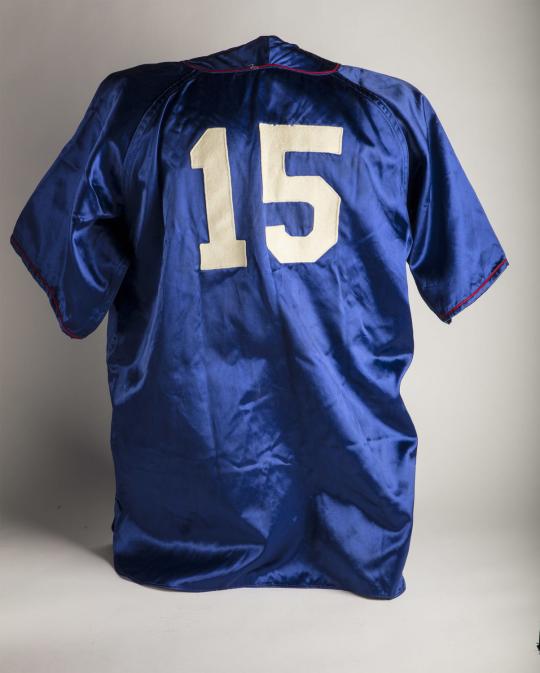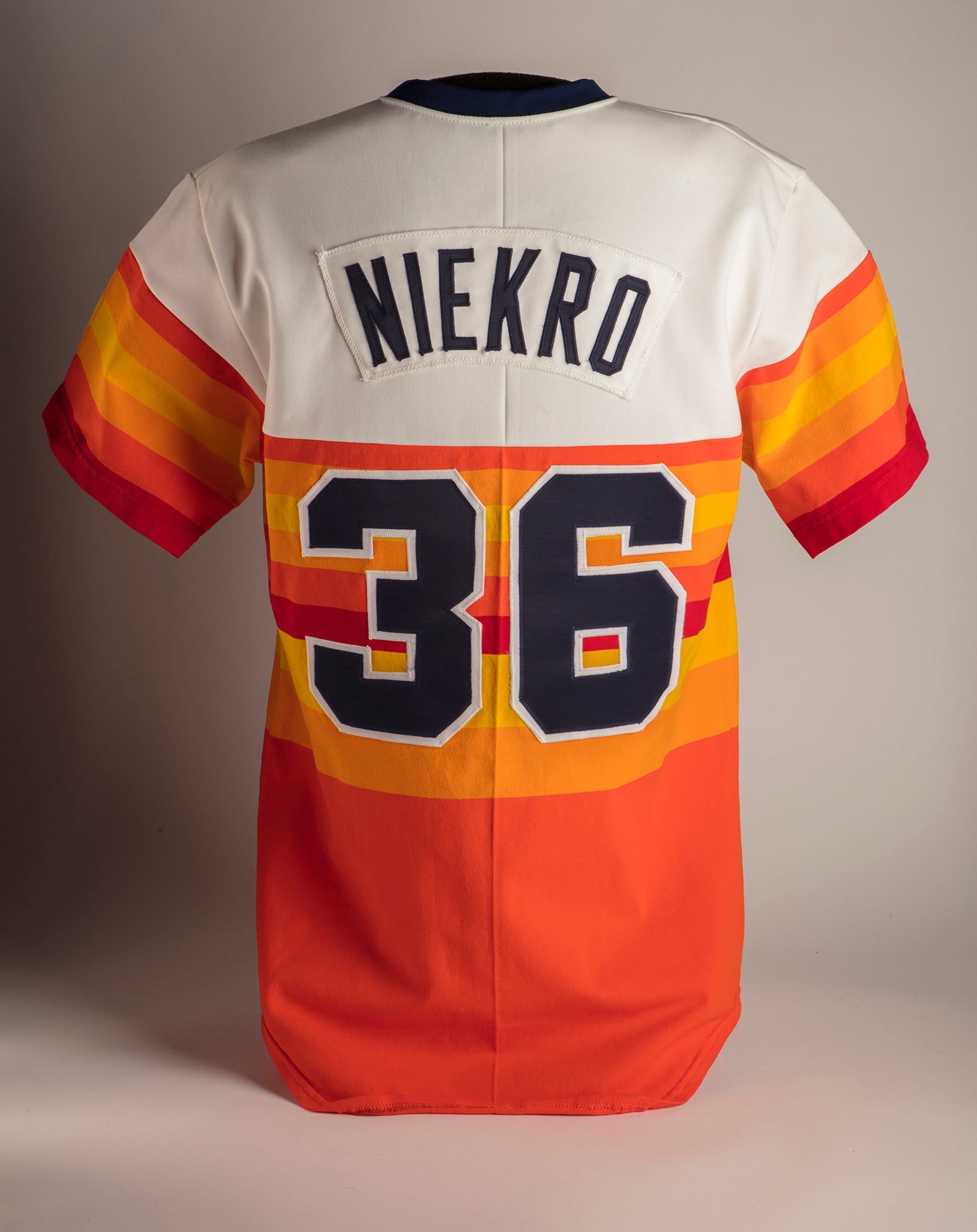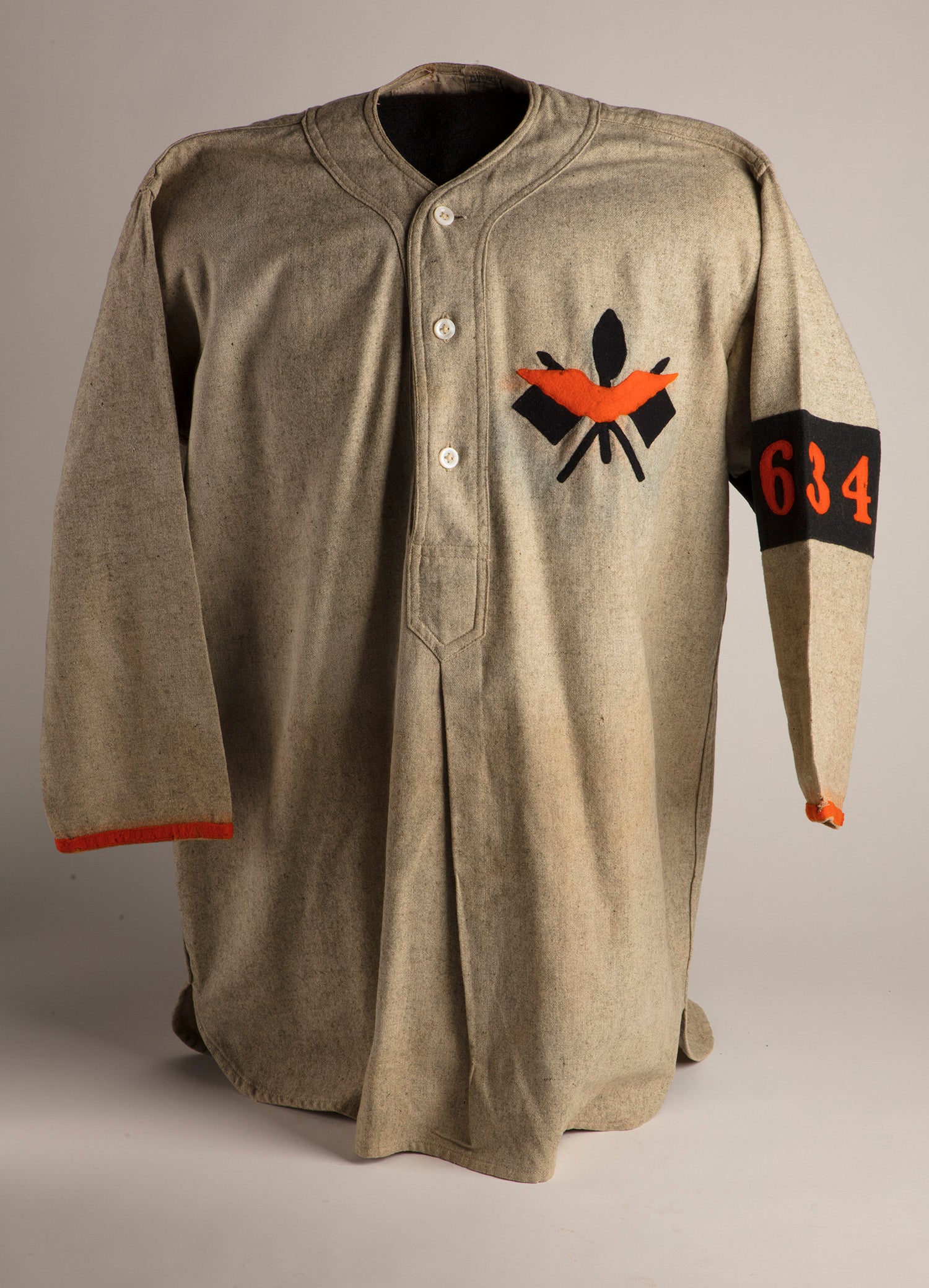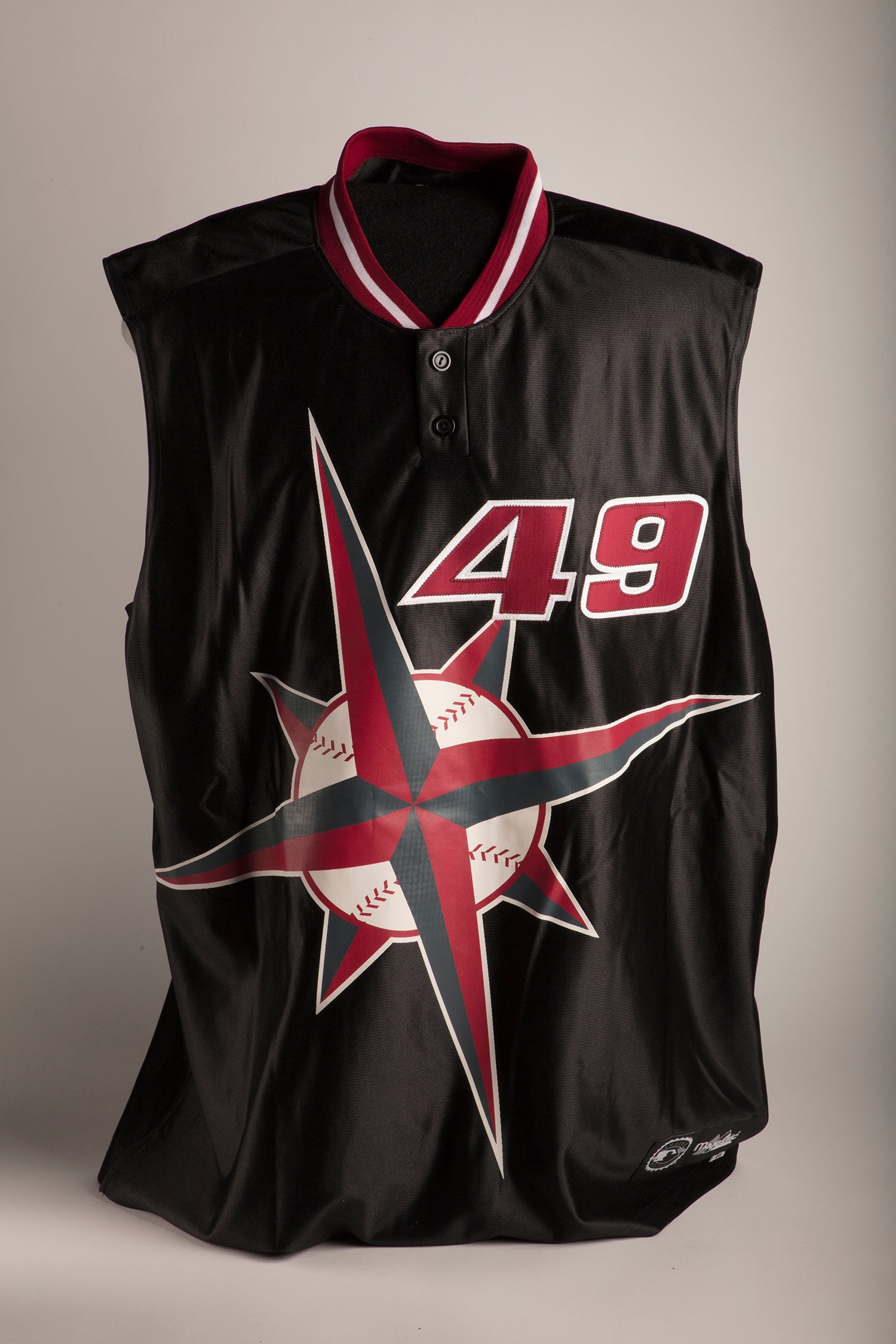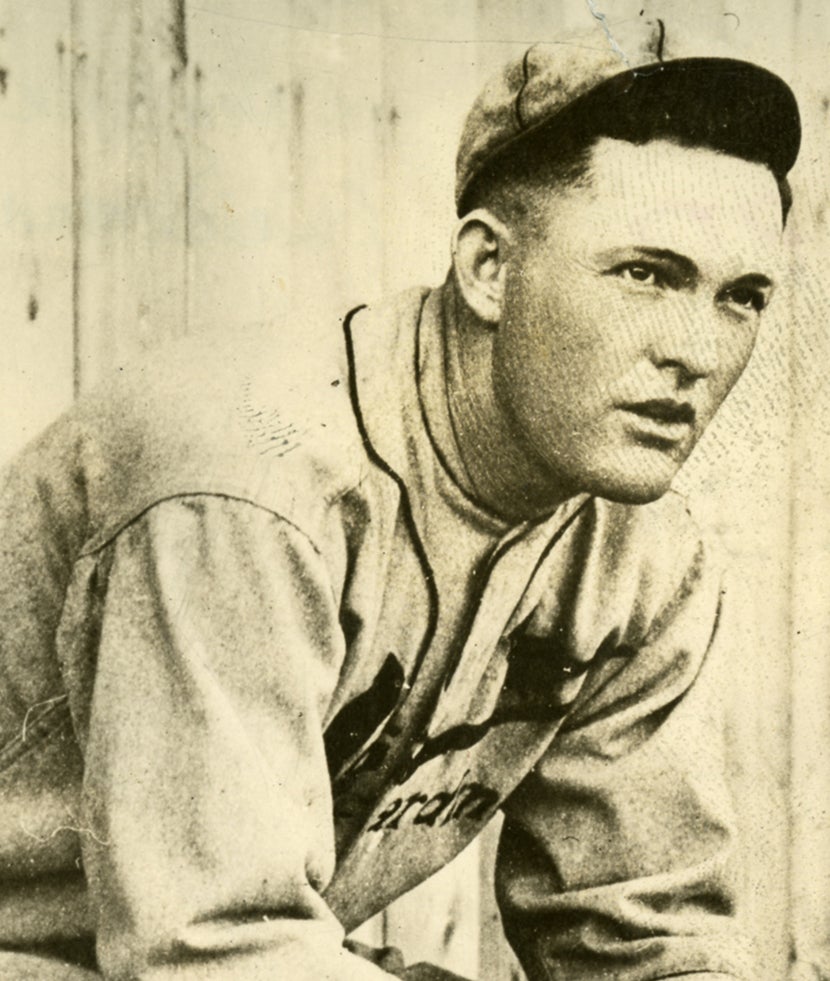- Home
- Our Stories
- #Shortstops: Starring in Satin
#Shortstops: Starring in Satin
Imagine that it’s a cool August evening in 1946. You’re wearing a blue satin uniform and you’re about to trot out to play second under the lights at Ebbets Field.
You’re perhaps a little bit nervous – after all, New York is a long train ride from Chicago. And for the next three games, you’re a member of a team made up of some of the best amateur players like yourself from across the country facing off against some of the most talented young men from Brooklyn. But you’re Art Sepke and you were selected to play in this series.
Official Hall of Fame Apparel
Proceeds from online store purchases help support our mission to preserve baseball history. Thank you!
Billed as “Brooklyn Against the World,” this three game series took place Aug. 7-9, 1946, and was sponsored by the Brooklyn Dodgers and the Brooklyn Daily Eagle newspaper with the goal of raising funds for amateur baseball programs. According to the Eagle’s nearly half-page write-up on the series in the March 3, 1946 edition, the Brooklyn all-stars were selected from Brooklyn and Long Island by a committee of “five baseball men in co-operation with the high school coaches and amateur baseball organizations” and were managed by the Dodgers’ Leo Durocher.
The World team was selected through committees put together by 20 newspapers in 20 territories (including Hawaii and Canada) and managed by Hall of Famer George Sisler. Sepke, recently graduated from high school, was chosen by the Chicago Daily News and a committee including Hall of Famer Rogers Hornsby to represent the Chicago-area territory.
Sepke and the rest of the World team wore blue satin uniforms while the Brooklyn team wore a lighter color. Donning these shiny uniforms was not entirely unusual for the era. Wool flannel uniforms were still the norm for day games, but several teams that had installed lights in their stadiums also outfitted their players in satin jerseys, pants, and caps with the hope that fans could see them better. These satin uniforms made their first appearance in the mid-1930s but became more popular with teams, especially the Dodgers, during the 1940s.
Sepke’s World Stars jersey in the National Baseball Hall of Fame and Museum’s collection provides some clues about satin uniforms and the production of fabric in that era. Made by Rawlings, another manufacturer’s tag in the jersey notes that it’s “Made of Skinner’s 817 Rayon Satin Cotton Back.”
According to The Modern Textile & Apparel Dictionary, the glossy side of a satin fabric is created with a particular technique while it’s being woven on the loom. While higher end satins are produced using silk, a less expensive version of the fabric is made of cotton and rayon as seen in this jersey. Besides being less costly, the cotton backing actually made the uniform more durable, allowing it to take the wear and tear of diving and sliding throughout the course of a ballgame. But the extra thickness of the fabric did not allow it to breathe as well as wool, so Sepke had to be thankful that the weather during the series was cooler than typical hot August evenings.
In the three games, Brooklyn took the first game, the World claimed the second, but Brooklyn bounced back and won the rubber match. Sepke defended second base in the first game and had at least two hits in the series, including a single that drove in two runs during the World’s 4-3 defeat of Brooklyn. He went on to play Class D ball in Oklahoma for the 1948 and 1949 seasons before his professional baseball career ended.
Although Sepke’s baseball career was short-lived, his satin World Stars uniform documents his opportunity of playing under the lights at Ebbets Field.
Gabrielle Augustine is a curator at the National Baseball Hall of Fame and Museum

